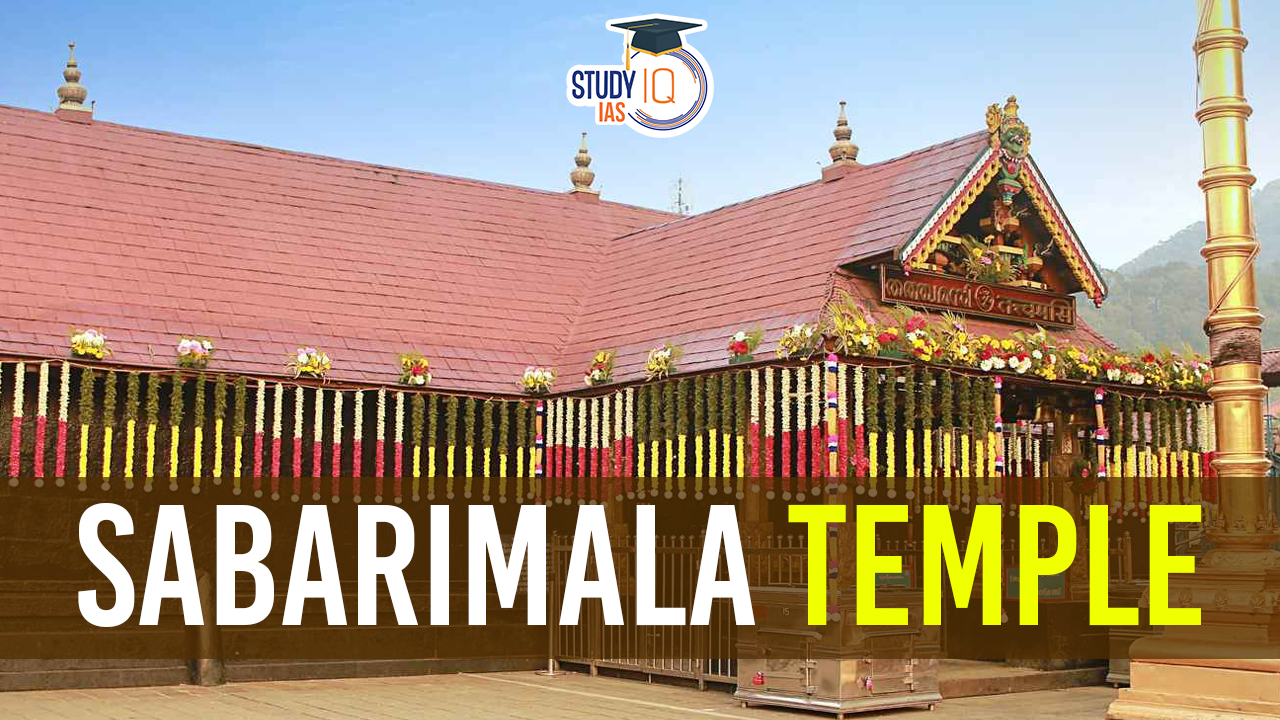Table of Contents
Protests erupted in Kerala on December 13, 2023, as grievances mounted over perceived mismanagement at the Sabarimala temple. The BJP Yuva Morcha accused the state government of mishandling the situation, citing issues such as extensive queues and inadequate basic facilities.
In response to the crisis, the Left Democratic Front (LDF) has implemented several measures to address the rush. These include the implementation of virtual queue bookings, an extension of the darshan time by one hour, and an enhancement of security measures along the pilgrimage route to the temple.
We’re now on WhatsApp. Click to Join
It is noteworthy that in 2022, the Supreme Court of India delivered a landmark verdict, allowing women of all ages to enter the Sabarimala Temple. The court emphasized that “devotion cannot be subjected to gender discrimination” and passed the ruling with a majority of 4-1. Despite the legal resolution, the recent protests highlight ongoing challenges in the effective implementation and management of the court’s decision, leading to tensions and discontent among various stakeholders.
Why Kerala’s Sabarimala mismanagement sparks massive protests?
Massive protests in Kerala over Sabarimala mismanagement stem from discontent among devotees due to long queues, inadequate facilities, and political accusations against the Left Democratic Front (LDF) government. The sensitive religious context, historical debates, and a 2022 Supreme Court ruling allowing women’s entry add to the complexity. The unfortunate death of a pilgrim amplifies safety concerns. Alleged discrimination and perceived mishandling intensify grievances, fueling the significant public outcry.
Sabarimala Temple History
Sabarimala is a prominent Hindu temple situated atop a hill in Kerala’s Pathanamthitta district. Dedicated to Ayyappa, the God of growth, it draws pilgrims from various parts of India and the world. The temple’s unique rituals and practices make it a significant pilgrimage site.
Origin and Rediscovery
Sabarimala is an ancient temple that remained largely inaccessible for centuries. In the 12th century, Prince Manikandan of the Pandalam Dynasty rediscovered the path to the temple. Considered an Avatar of Ayyappa, he meditated at Sabarimala, uniting with the divine. The path was revealed with the help of followers, including descendants of Vavar, a defeated Muslim warrior.
Beliefs and Pilgrimage Practices
Pilgrims undertake challenging forest treks, as vehicles cannot reach the temple. They observe 41 days of celibacy, follow a lacto-vegetarian diet, abstain from alcohol, and maintain personal cleanliness. Wearing black or blue attire, pilgrims avoid shaving, allowing hair and nails to grow. Vibhuti or sandal paste is applied to the forehead. Bathing twice a day and regular temple visits are integral to the pilgrimage.
Controversy over Women’s Entry
For centuries, Sabarimala adhered to a ban on women aged 10 to 50, citing Lord Ayyappa’s celibacy. In 1991, the Kerala High Court upheld the ban, but in 2018, the Supreme Court overturned it, deeming gender-based discrimination unconstitutional. The temple’s head priest expressed disappointment but accepted the court’s decision.
The Supreme Court’s ruling sparked protests, especially by devotees, including women, who blocked highways. The controversy took a political turn when the BJP ally, Shiv Sena, warned of “mass suicides” if women entered Sabarimala. Protests intensified during the temple’s opening, with demonstrators aiming to prevent women from entering.
Who is Lord Ayyappa?
Lord Ayyappa is a Hindu deity revered particularly in the Southern Indian states of Kerala, Tamil Nadu, Karnataka, and Andhra Pradesh. He is considered a composite deity, embodying elements of Shiva and Vishnu, and is often depicted as a celibate god associated with the principles of dharma (righteousness) and self-discipline.
The mythology surrounding Lord Ayyappa is unique and is centered around his birth and divine mission. According to the popular legend:
- Birth: Ayyappa is believed to be the son of Lord Shiva and Mohini, an incarnation of Lord Vishnu. This union took place during the episode of the churning of the ocean (Samudra Manthan) when the deities were trying to obtain the elixir of immortality (amrita).
- Celibacy and Divine Mission: Ayyappa is considered a Naishtika Brahmachari, meaning a perpetual celibate. This aspect of his character is central to the pilgrimage traditions at the Sabarimala temple. According to the mythology, Ayyappa’s divine mission is to annihilate the demoness Mahishi, who could only be defeated by a celibate warrior. Ayyappa accomplished this mission and then chose to reside in the Sabarimala temple.
Devotees of Lord Ayyappa believe that undertaking the pilgrimage to Sabarimala with devotion and discipline brings spiritual growth and blessings from the deity. The rituals and traditions associated with Lord Ayyappa have deep cultural and religious significance in the states where his worship is prevalent.
Sabarimala Temple UPSC
Protests erupted in Kerala over perceived mismanagement at Sabarimala, with grievances including long queues and inadequate facilities. The BJP accused the state government, while the Left Democratic Front (LDF) implemented measures like virtual queues and extended darshan time. Despite the 2022 Supreme Court ruling allowing women’s entry, recent protests reveal ongoing challenges, fueled by historical debates. The death of a pilgrim raised safety concerns, intensifying grievances and public outcry. Sabarimala, dedicated to Lord Ayyappa, draws pilgrims with unique rituals. Controversy surrounds the temple’s ban on women, lifted in 2018, sparking protests and adding to the complex situation.


 5 Years of SVAMITVA Scheme and Its Benef...
5 Years of SVAMITVA Scheme and Its Benef...
 Places in News for UPSC 2025 for Prelims...
Places in News for UPSC 2025 for Prelims...
 Countercyclical Capital Buffer (CCyB): P...
Countercyclical Capital Buffer (CCyB): P...





















